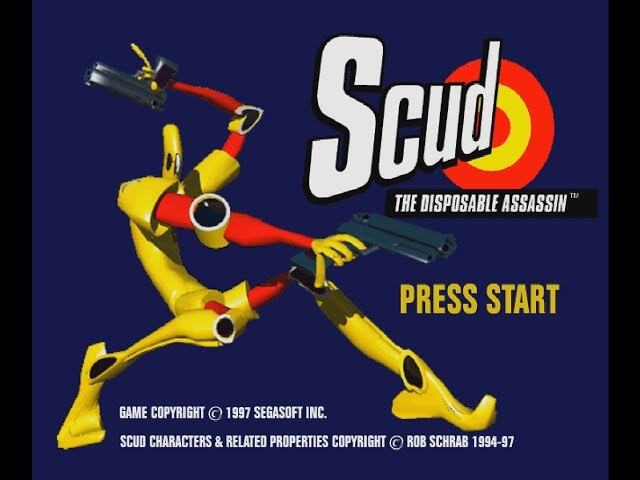Scud: The Disposable Assassin lost its spare style in the move to video games

Rob Schrab’s Scud: The Disposable Assassin is a comic book so thoroughly of its time that it feels like the physical manifestation of ’90s indie comics in the way that Sandman’s Morpheus is the embodiment of dreams. The title character’s elongated limbs, his sarcastic wit, and the vivid black-and-white art of its first 20 issues were reflections of the young Schrab’s personal style, but they were also a crystallization of a larger, thriving indie comic style. Pouring out of publishers like Fantagraphics, Slave Labor Graphics, and even the first few years of Oni Press, indies bore the DIY spirit of ’70s and ’80s comix but benefited from a cleanliness missing in the crowded, messy art of those older books.
Scud was a perfect example, each issue a snide chunk of cartoon violence as cool as it was pretty. Scud: The Disposable Assassin for Sega Saturn, the rare video game adaptation of a non-Marvel or DC superhero, is sometimes cool and momentarily pretty, but in abandoning the look of the comic, it loses much of its soul. The game is equally of its time, an adaptation that sometimes comes frustratingly close to capturing its source before it’s drowned out by once trendy technology.
Scud the comic is perfect fodder for a video game. In its technologically advanced future, killers can be purchased from vending machines. Pop in a measly sum of three franks (not francs, mind you) and you get a Heart Breaker Series 1373 model assassin, ready to take out a target of your choice with customizable settings for how you want the job done. The Scud starring in both the comic and game is activated to take out Jeff, an aggressive beast with an electrical socket for a face, mousetrap fists, and gaping Twizzlers mouths for knees. When Scud spots the warning label on his back advising customers to keep in mind that he’ll self-destruct upon completing his mission, Scud maims Jeff and puts it in the hospital to create a loophole that’s keeping them both alive.
The comic uses this grotesque premise to send Scud off on all kinds of jobs as a mercenary, earning enough to pay Jeff’s hospital bills and keep on ticking. Schrab’s flair for the comically absurd that later manifested in his television work—writing and/or directing the likes of The Sarah Silverman Program, Childrens Hospital, and Community—was founded in these books, but his wiggly clean art added a dimension of inhuman dynamism. Full pages of his work would shift between spare images of Scud yelling to some hyperdetailed piece of science-fiction tech, creating space for the humor and action to expand and contract.








































